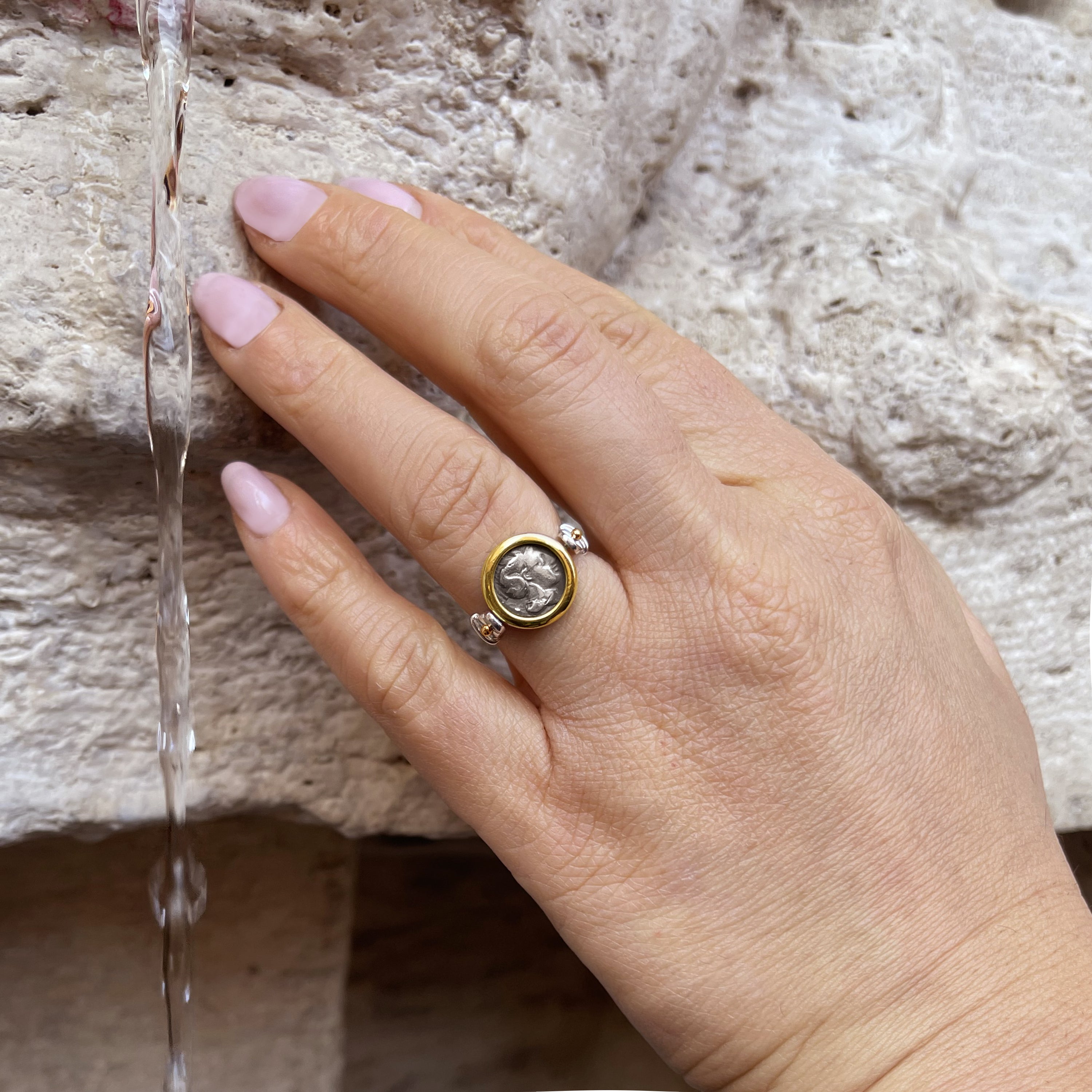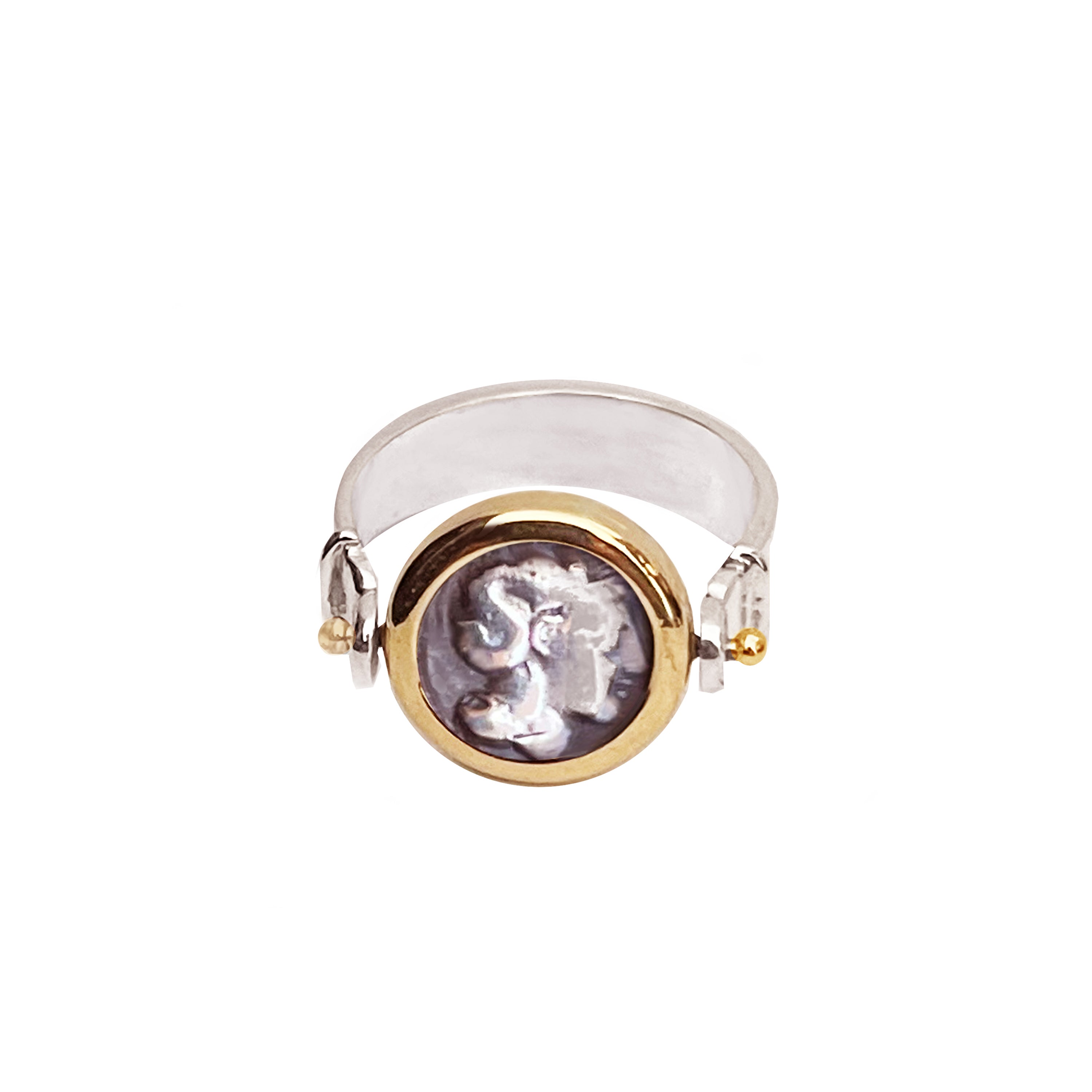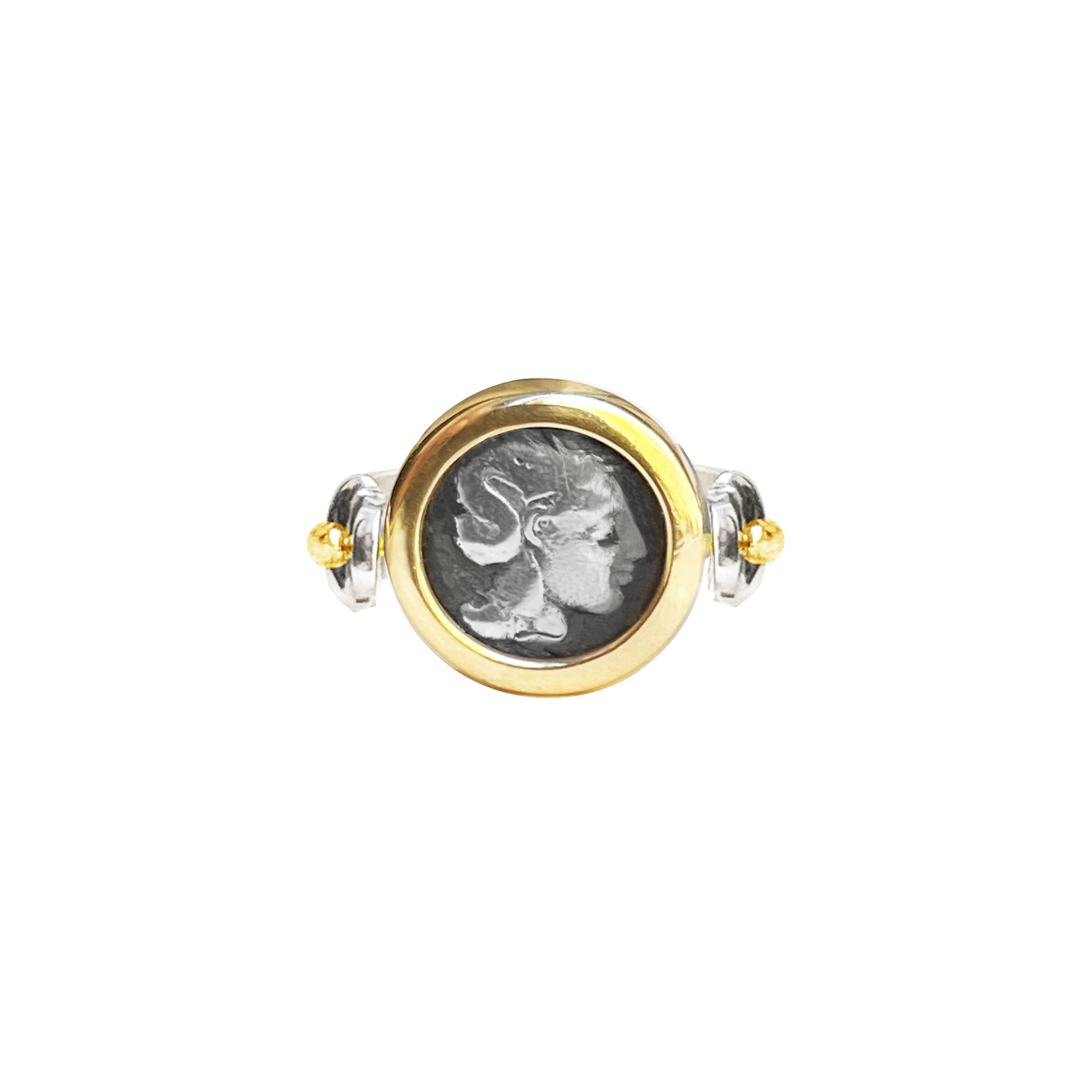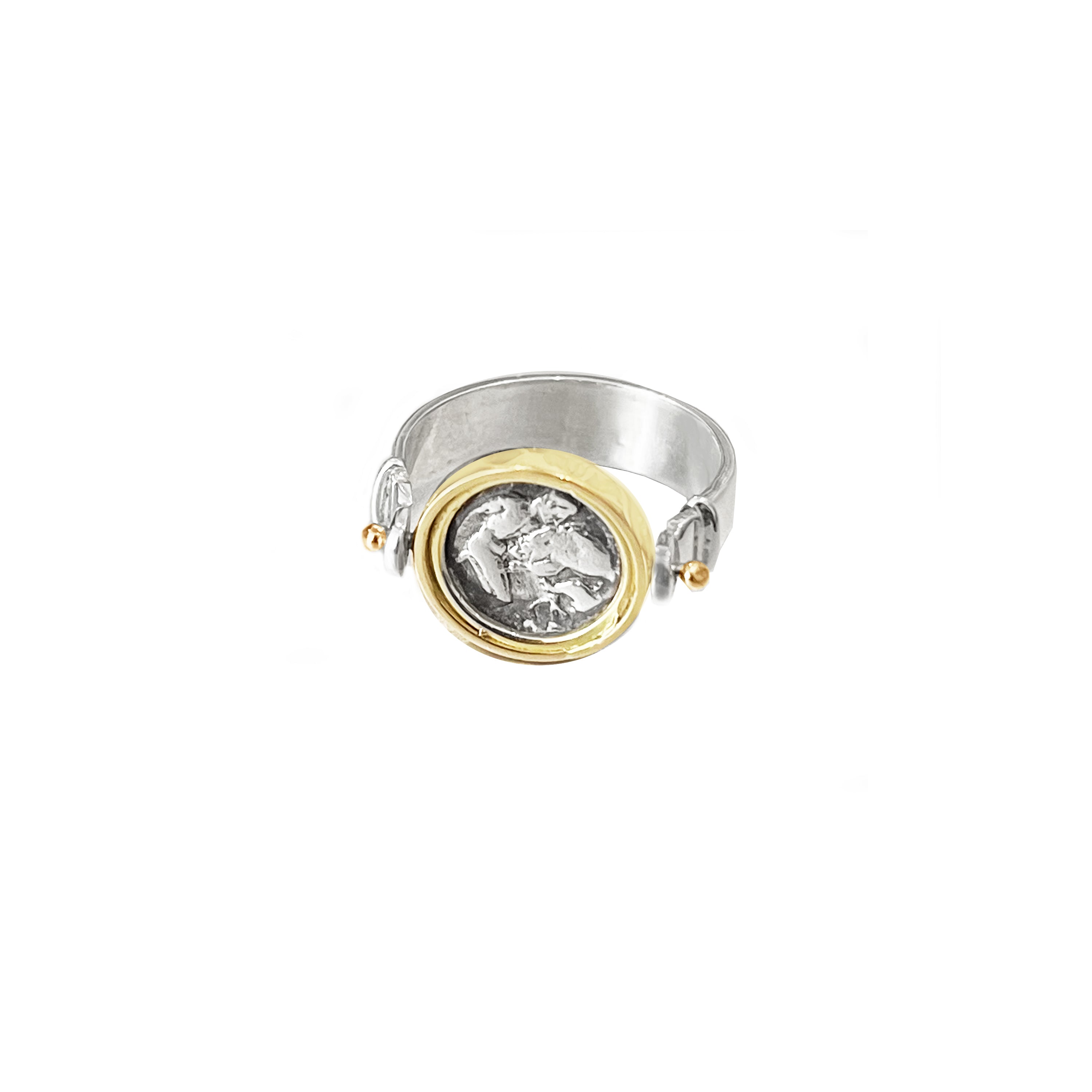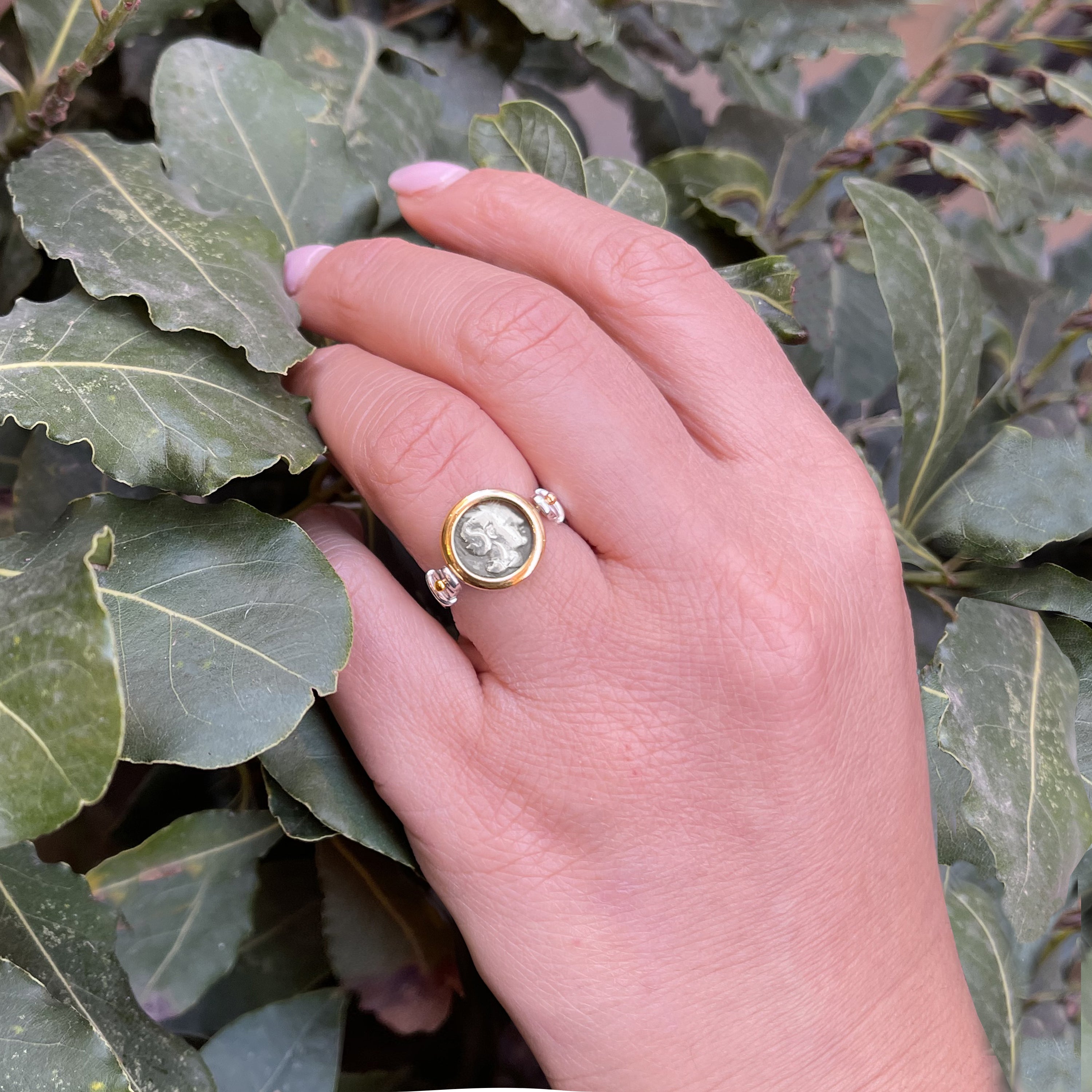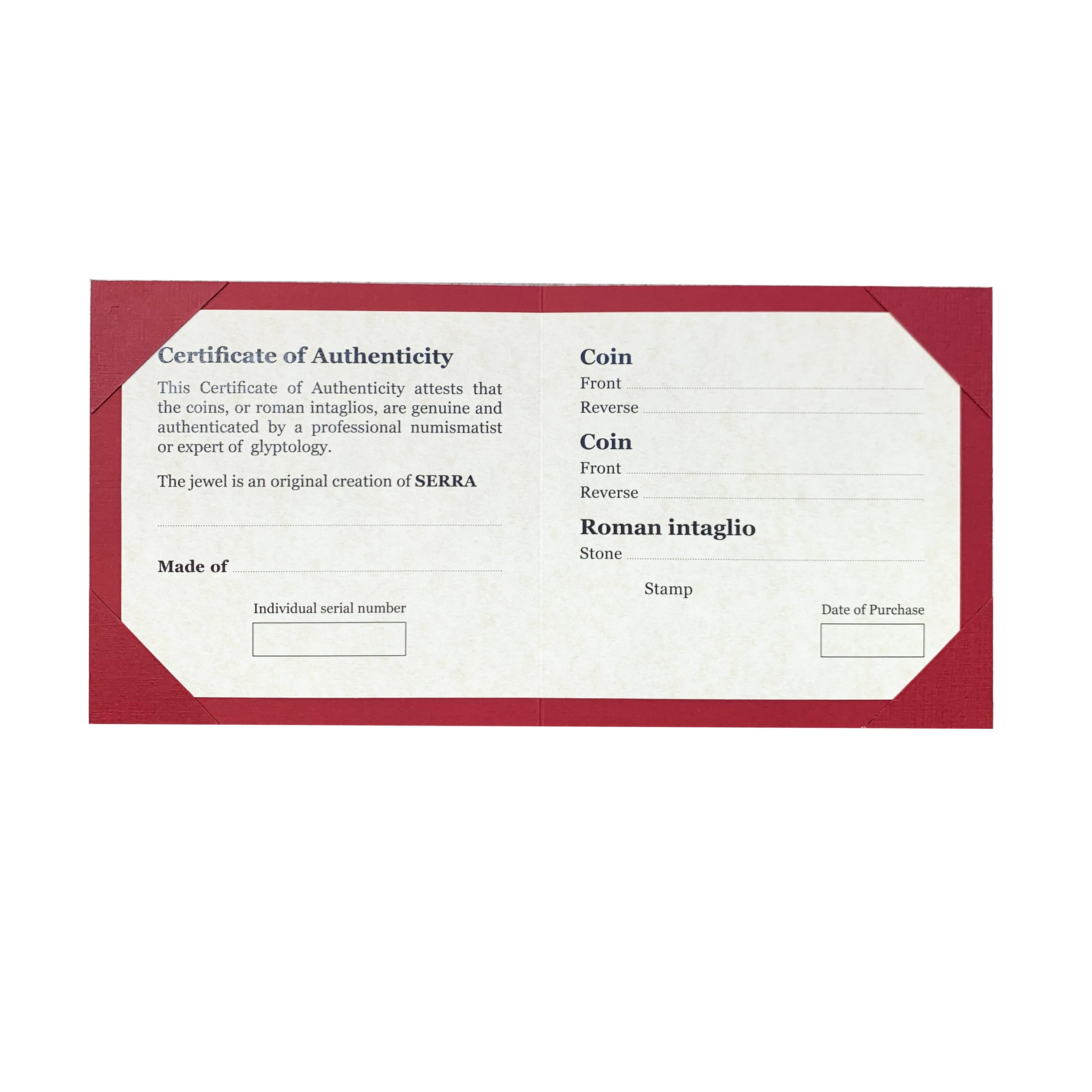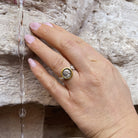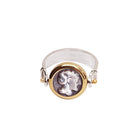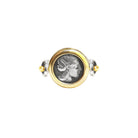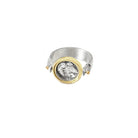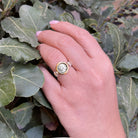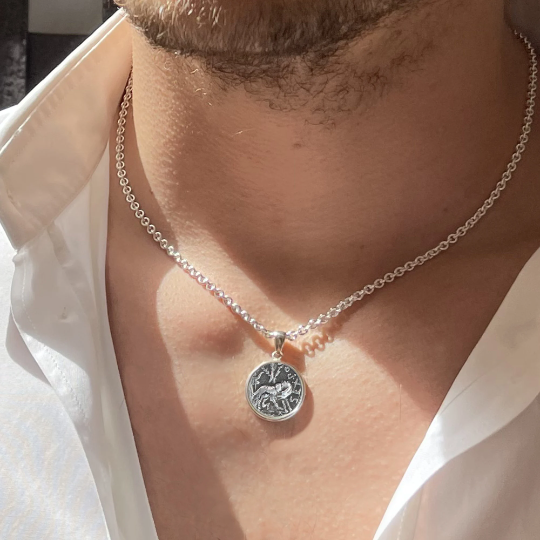Authentic Ancient Greek Coin 281 BC 18Kt Gold and 925 Silver Ring depicting Goddess Athena
This exquisite 18 Kt gold and sterling silver ring showcases an authentic Greek diobolus dating back to 281 BC. The coin features the depiction of Goddess Athena on one side and Heracles standing triumphantly with a lion on the other.
Athena, the Olympian goddess of wisdom and war, holds a revered position as the patroness of Athens. As a virgin deity, she is also associated with peace and skilled craftsmanship, particularly in spinning and weaving. Majestic and formidable, Athena reigns supreme in both her domains.
Even Ares, the god of war, feared her, and countless Greek heroes sought her aid and counsel. In art and literature, Athena is often portrayed as a regal figure with a stern yet beautiful face, full lips devoid of a smile, piercing gray eyes, and an imposing physique. She is invariably adorned in either a chiton or full armor, radiating power and authority.
Heracles, also known as Herakles in Greek and Hercules in Roman mythology, is among the most renowned legendary heroes of the Greco-Roman world. According to tradition, Heracles is the son of Zeus and Alcmene, who is the granddaughter of Perseus. Zeus had sworn that the next male descendant of the Perseid lineage would become the ruler of Greece. However, through a jealous ploy by Hera, Zeus's wife, a sickly child named Eurystheus was born first and ascended to the throne.
Heracles, upon reaching adulthood, found himself in the service of Eurystheus and subjected to Hera's relentless persecution. His first feat was the stranglehold of two serpents sent by Hera to slay him in his cradle. Heracles later engaged in a successful war against the kingdom of Orchomenus in Boeotia and married Megara, the daughter of Creon, the king of Thebes. Tragically, driven into madness by Hera's influence, Heracles inadvertently killed Megara and their children, leading to his servitude under Eurystheus.
It was Eurystheus who imposed upon Heracles the famous Twelve Labours, which are commonly listed as follows: (1) slaying the Nemean lion and donning its impenetrable skin; (2) defeating the nine-headed Hydra of Lerna; (3) capturing the elusive hind of Arcadia; (4) capturing the wild boar of Mount Erymanthus; (5) cleansing the cattle stables of King Augeas of Elis in a single day; (6) shooting the man-eating birds of the Stymphalian marshes; (7) capturing the mad bull that terrorized the island of Crete; (8) seizing the man-eating mares of King Diomedes of the Bistones; (9) obtaining the girdle of Hippolyte, queen of the Amazons; (10) acquiring the cattle of the three-bodied giant Geryon, who ruled the island of Erytheia; (11) retrieving the golden apples guarded by the Hesperides at the edge of the world; and (12) bringing back the triple-headed dog Cerberus, the guardian of the underworld's gates.
In art and literature, Heracles is often depicted as an immensely strong man of average height, renowned for his voracious appetite and amorous nature. While generally benevolent, he occasionally succumbs to fits of brutal rage. His signature weapons include the bow and frequently the club. In Italy, he was revered as a god of merchants and traders, while others sought his favor for good luck and protection from danger.
Our jewelry store, Serra Roma, proudly presents an exquisite collection that beautifully honors the ancient traditions of Greek and Roman civilizations. Each piece in our collection, including authentic ancient Roman and Greek coins and intaglios, is accompanied by a certificate of authenticity, providing proof of its historical significance and origin.

